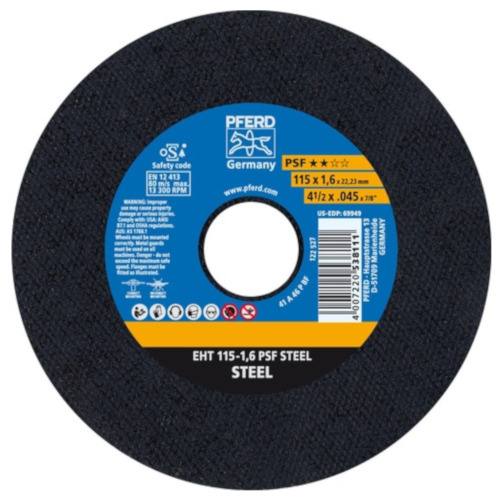What Kind of Abrasive is Best for Your Application?
Posted by Natasha Teymourian on 18th Apr 2019
Abrasives, commonly known as “sandpaper,” are used to polish or clean a hard surface by rubbing or grinding. While not made of sand – or paper – these smoothing tools can be created out a variety of different materials, all which range from fine finishing applications to heavy-duty cutting.
Is Sandpaper the Only Kind of Abrasive?
No – it’s just the most common kind. In industrial applications, abrasives like Cutting or Cut-Off Wheels and Grinding Wheels can be paired with Pneumatic Right Angle Grinders, and Abrasive Belt Tools to increase your plant’s or shop’s efficiency.
The two main groups of abrasives are coated and bonded.
Coated abrasives usually attach to belts, sheets, discs, and rolls. The term “coated” refers to the layered grits and grains over a surface. The classic sandpaper from everyone’s toolbox is considered a coated abrasive!
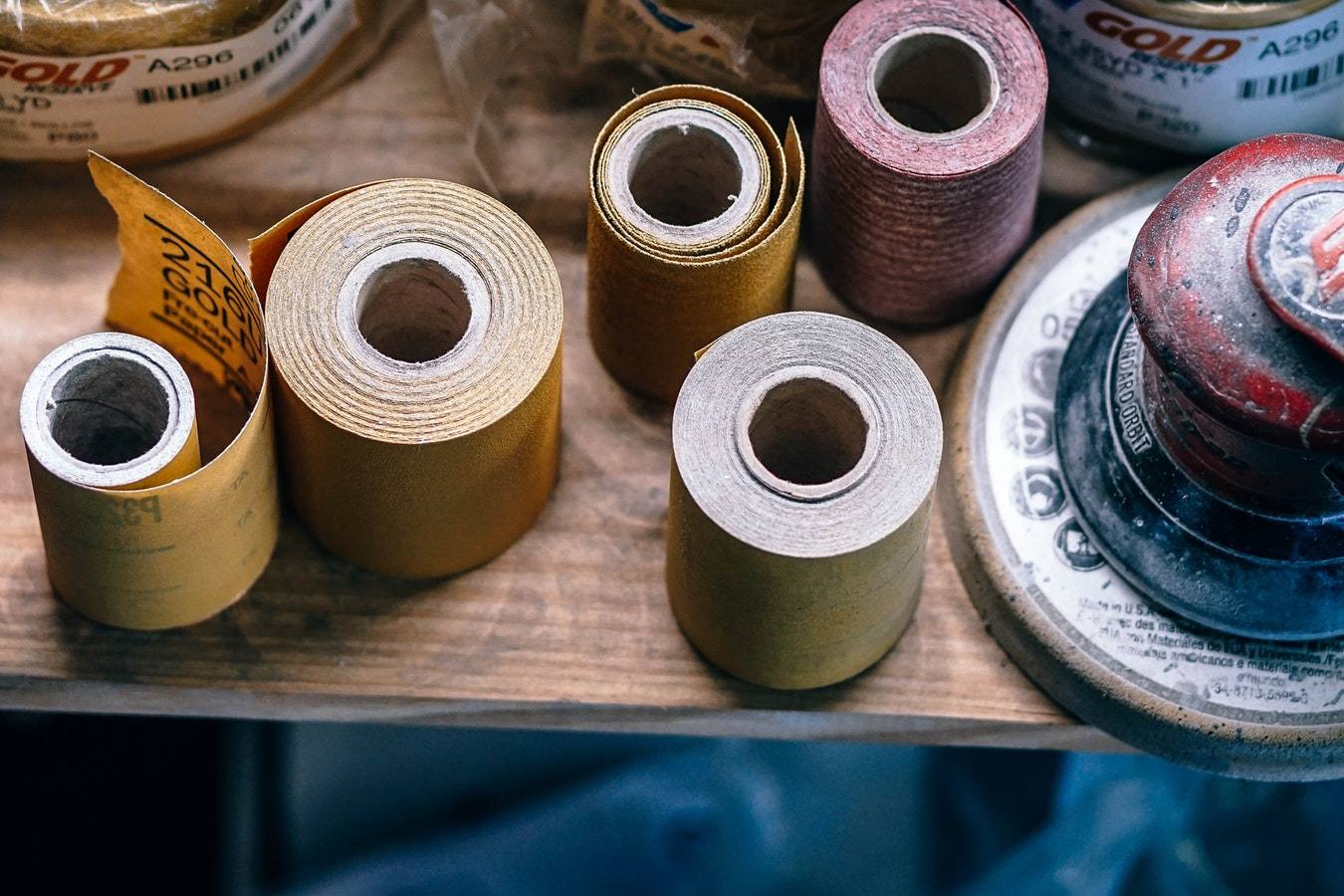
Bonded abrasives are designed for use with a grinding wheel and feature grains that have been bonded together with a binding agent or resin.
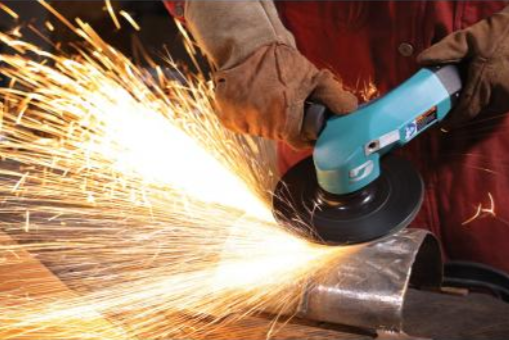
The type of material that bonded abrasives can cut depend on the grain type, bond material, and spacing – all of which we’ll cover in the next section.
Flint
The classic sandpaper abrasive; While its cutting ability and durability are limited, flint is the most popular type of abrasive simply because it’s the cheapest. The grit on this natural sandpaper is created out of a natural grayish mineral.
Garnet
Another type of common sandpaper, this natural abrasive is the next step up from flint. While it costs a little more, it also cuts better. Experts recommend using this reddish grit to sand bare soft wood (but not much else). Garnet has a medium hardness that makes it perfect for finishing applications.
Aluminum Oxide
Beloved by DIY-ers and manufacturers working with metal and wood, this synthetic grit is much more durable than the first two types of abrasive. Durable in applications involving tough cutting edges on a variety of workpieces: aluminum oxide abrasives are used for carbon, alloy steel, wrought iron, and bronze . Typically brown or reddish in hue, aluminum oxide can also appear blue, green, or yellow if mixed with a grinding aid or lubricant and is praised for its longevity when compared to other grains.
|
Aluminum Oxide Cut-Off Wheel |
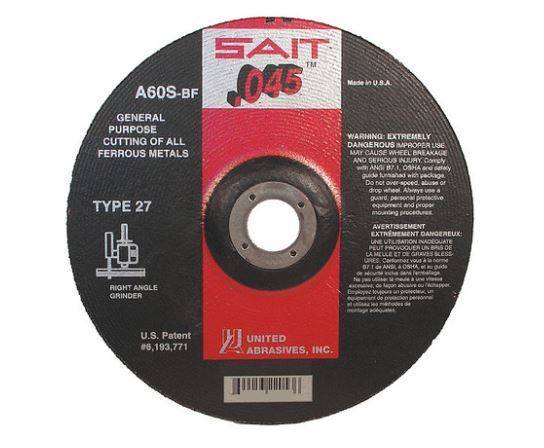 United Abrasives SAIT Type 27 Aluminum Oxide Cut-Off Wheel |
Zirconia Alumina
Rough and tough cutting applications have no fear: this durable abrasive uses a mixture of aluminum oxide and zirconium oxide to create a durable surface. Zirconia Alumina Cut-Off Wheels work best with steel and steel alloys. Usually green or blue in color, zirconia alumina abrasives work best under high pressure that forces the grain to fracture and expose new sharp edges.
Silicon Carbide
With synthetic grit, silicon carbide abrasives are the hardest type of abrasive there is. Silicon Carbide gets sharper, smoother cuts on non-ferrous materials (rubber, stone, plastic, fiberglass, and glass), and cast iron, soft bronze, and aluminum . For fine smoothing applications, these abrasives can be used with oil or water. These abrasives, along with aluminum oxide abrasives, have mostly displaced emery cloth (also called black sandpaper). Silicon Carbide is known for its fast stock removal rates and friable grains that fracture sharply to expose new cutting edges for maximum efficiency.
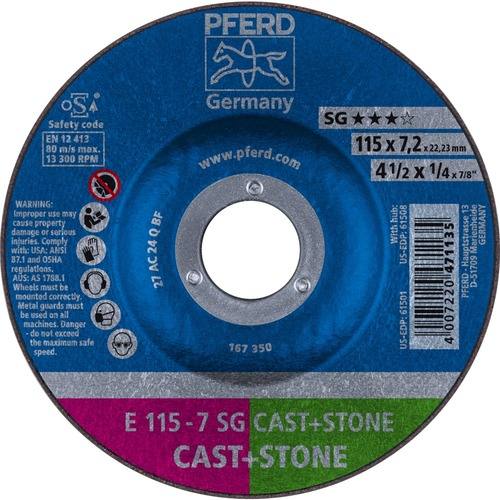
Ceramic Aluminum Oxide
The top of the line abrasive, ceramic aluminum oxide capitalizes on the consistent breakdown of grains that good abrasives are known to have. Breakdowns form sharp cutting surfaces and brand-new cutting points, which are perfect when working with the hardest metals on precision grinding projects. Ceramic Aluminum Oxide Abrasives control the breakdown fracture rate down to the sub-micron level. They also provide the longest life and the fastest cut rate on metal applications and can be red or orange in color.
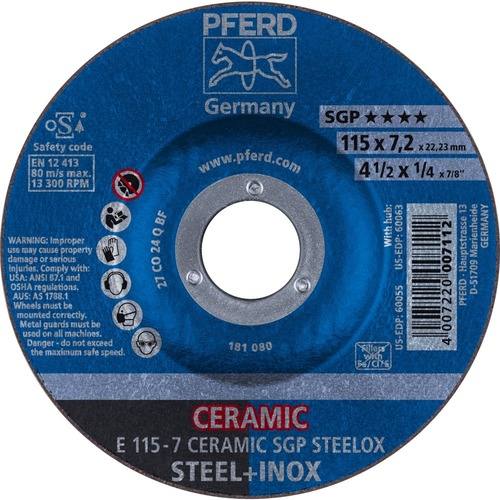 Pferd Type 27 Ceramic Oxide Grinding Wheel |
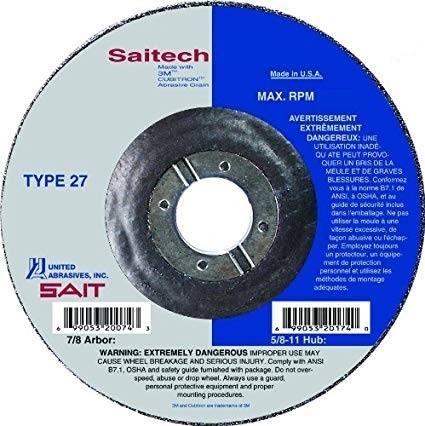
Ceramic Grinding Wheel |
If you’re still not sure what kind of abrasive is best for your need or if you’re looking for a specific kind of abrasive, International Air Tool has your back. Contact us for expert advice on abrasive grades and types, at 800-608-5210 or info@intlairtool.com.



